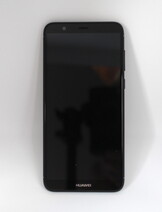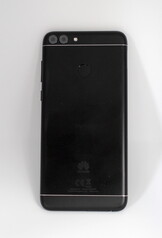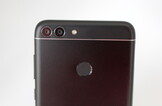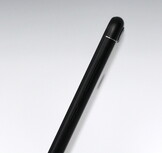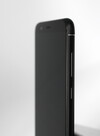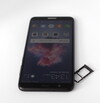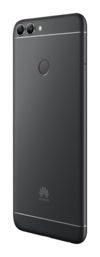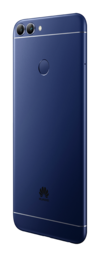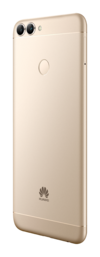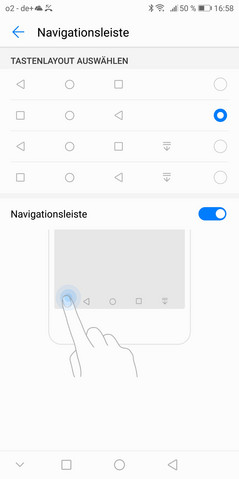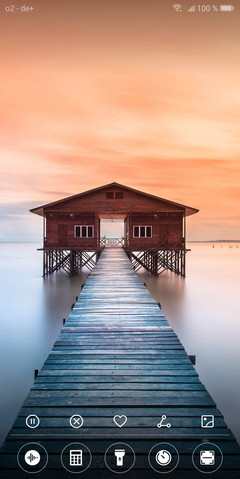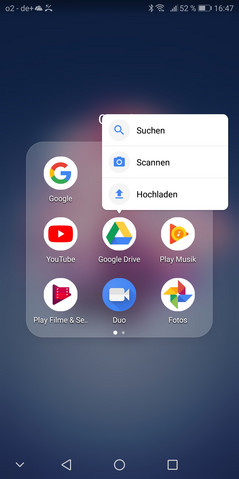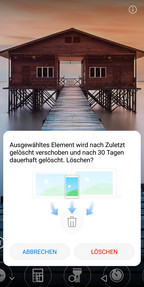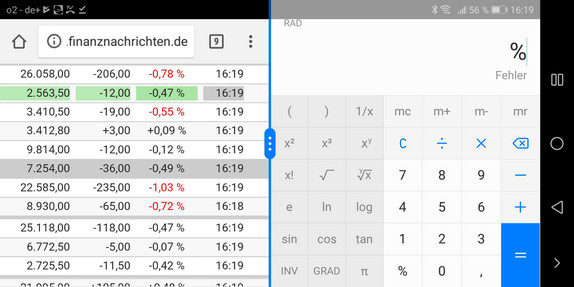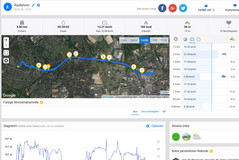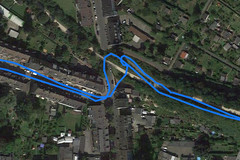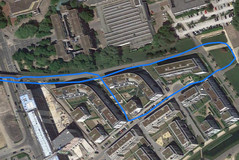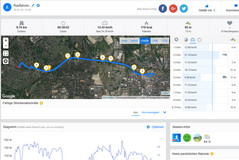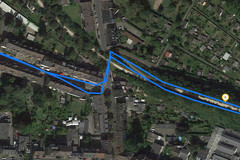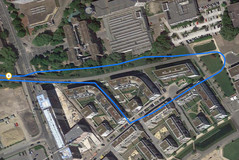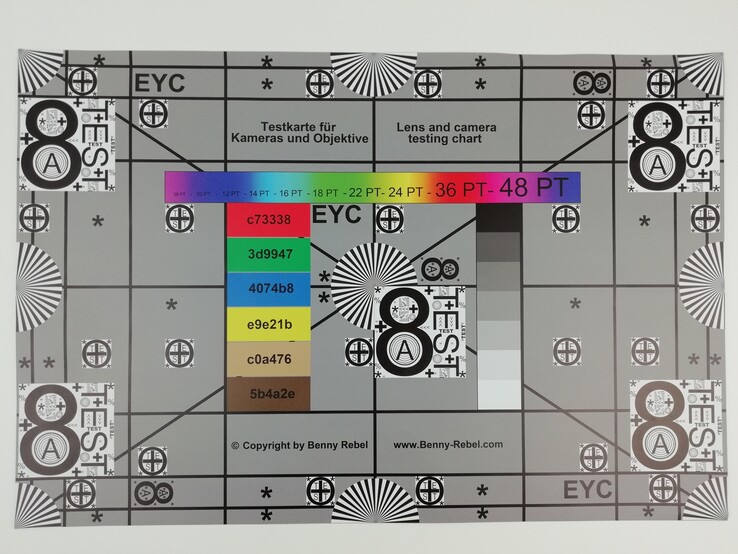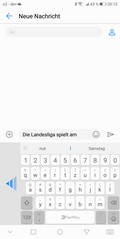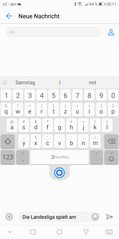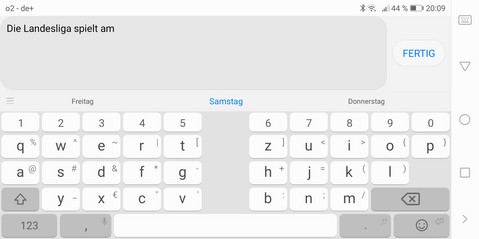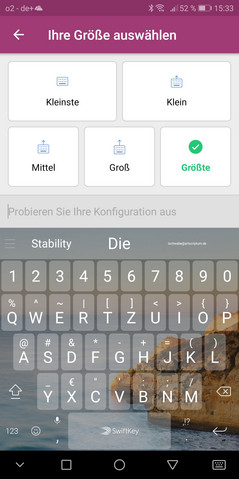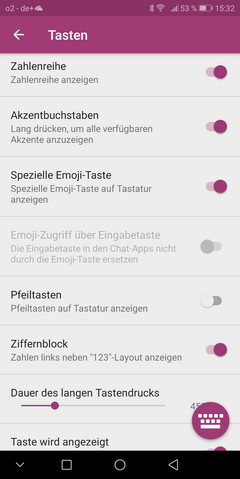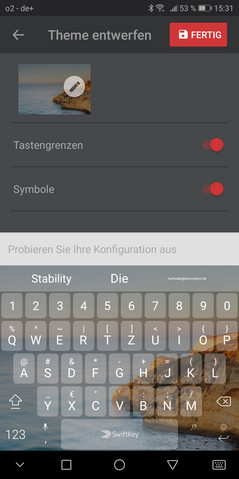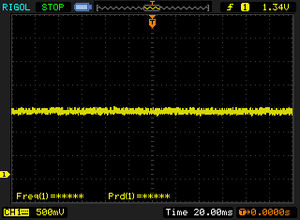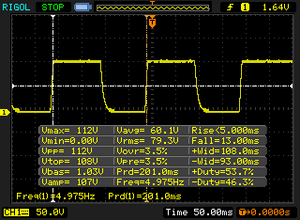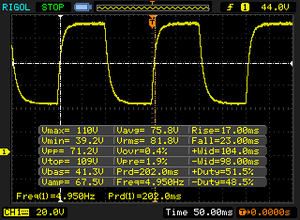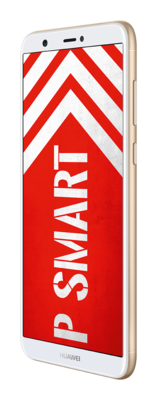Breve Análise do Smartphone Huawei P Smart
Os Top 10
» Os Top 10 Portáteis Multimídia
» Os Top 10 Portáteis de Jogos
» Os Top 10 Portáteis Leves para Jogos
» Os Top 10 Portáteis Acessíveis de Escritório/Empresariais
» Os Top 10 Portáteis Premium de Escritório/Empresariais
» Os Top 10 dos Portáteis Workstation
» Os Top 10 Subportáteis
» Os Top 10 Ultrabooks
» Os Top 10 Conversíveis
» Os Top 10 Tablets
» Os Top 10 Smartphones
» A melhores Telas de Portáteis Analisadas Pela Notebookcheck
» Top 10 dos portáteis abaixo dos 500 Euros da Notebookcheck
» Top 10 dos Portáteis abaixo dos 300 Euros
Size Comparison
| |||||||||||||||||||||||||
iluminação: 89 %
iluminação com acumulador: 573 cd/m²
Contraste: 910:1 (Preto: 0.63 cd/m²)
ΔE ColorChecker Calman: 4.2 | ∀{0.5-29.43 Ø4.78}
ΔE Greyscale Calman: 4.6 | ∀{0.09-98 Ø5}
Gamma: 2.24
CCT: 7157 K
| Huawei P smart IPS, 2160x1080, 5.7" | Honor 9 Lite IPS, 2160x1080, 5.7" | Huawei P8 lite 2017 IPS, 1920x1080, 5.2" | Huawei Mate 10 Lite IPS, 2160x1080, 5.9" | Samsung Galaxy J7 2017 Super AMOLED, 1920x1080, 5.5" | Samsung Galaxy A3 2017 Super AMOLED, 1280x720, 4.7" | Motorola Moto G5s IPS, 1920x1080, 5.2" | BQ Aquaris X LTPS IPS , 1920x1080, 5.2" | |
|---|---|---|---|---|---|---|---|---|
| Screen | 11% | -5% | 1% | 15% | 25% | -3% | -2% | |
| Brightness middle (cd/m²) | 573 | 627 9% | 575 0% | 467 -18% | 454 -21% | 574 0% | 490 -14% | 675 18% |
| Brightness (cd/m²) | 568 | 622 10% | 559 -2% | 457 -20% | 463 -18% | 576 1% | 502 -12% | 702 24% |
| Brightness Distribution (%) | 89 | 82 -8% | 91 2% | 89 0% | 86 -3% | 94 6% | 92 3% | 91 2% |
| Black Level * (cd/m²) | 0.63 | 0.41 35% | 0.39 38% | 0.3 52% | 0.43 32% | 0.59 6% | ||
| Contrast (:1) | 910 | 1529 68% | 1474 62% | 1557 71% | 1140 25% | 1144 26% | ||
| Colorchecker dE 2000 * | 4.2 | 4.5 -7% | 5.2 -24% | 5 -19% | 2 52% | 2.4 43% | 5.7 -36% | 4.5 -7% |
| Colorchecker dE 2000 max. * | 6.4 | 7 -9% | 10.3 -61% | 8.2 -28% | 5.3 17% | 3.8 41% | 7.8 -22% | 9.1 -42% |
| Greyscale dE 2000 * | 4.6 | 5.1 -11% | 7.2 -57% | 6.1 -33% | 1.7 63% | 1.9 59% | 4.7 -2% | 6.4 -39% |
| Gamma | 2.24 98% | 2.26 97% | 2.4 92% | 2.15 102% | 2.1 105% | 2.09 105% | 2.4 92% | 2.24 98% |
| CCT | 7157 91% | 7201 90% | 7224 90% | 7961 82% | 6394 102% | 6502 100% | 7526 86% | 7478 87% |
* ... menor é melhor
Cintilação da tela / PWM (modulação por largura de pulso)
| Tela tremeluzindo / PWM não detectado | |||
[pwm_comparison] Em comparação: 53 % de todos os dispositivos testados não usam PWM para escurecer a tela. Se PWM foi detectado, uma média de 8111 (mínimo: 5 - máximo: 343500) Hz foi medida. | |||
Exibir tempos de resposta
| ↔ Tempo de resposta preto para branco | ||
|---|---|---|
| 18 ms ... ascensão ↗ e queda ↘ combinadas | ↗ 5 ms ascensão | |
| ↘ 13 ms queda | ||
| A tela mostra boas taxas de resposta em nossos testes, mas pode ser muito lenta para jogadores competitivos. Em comparação, todos os dispositivos testados variam de 0.1 (mínimo) a 240 (máximo) ms. » 39 % de todos os dispositivos são melhores. Isso significa que o tempo de resposta medido é melhor que a média de todos os dispositivos testados (20.2 ms). | ||
| ↔ Tempo de resposta 50% cinza a 80% cinza | ||
| 40 ms ... ascensão ↗ e queda ↘ combinadas | ↗ 17 ms ascensão | |
| ↘ 23 ms queda | ||
| A tela mostra taxas de resposta lentas em nossos testes e será insatisfatória para os jogadores. Em comparação, todos os dispositivos testados variam de 0.165 (mínimo) a 636 (máximo) ms. » 60 % de todos os dispositivos são melhores. Isso significa que o tempo de resposta medido é pior que a média de todos os dispositivos testados (31.6 ms). | ||
| AnTuTu v6 - Total Score (classificar por valor) | |
| Huawei P smart | |
| Honor 9 Lite | |
| Huawei P8 lite 2017 | |
| Huawei Mate 10 Lite | |
| Samsung Galaxy J7 2017 | |
| Samsung Galaxy A3 2017 | |
| Motorola Moto G5s | |
| BQ Aquaris X | |
| Geekbench 4.4 | |
| 64 Bit Single-Core Score (classificar por valor) | |
| Huawei P smart | |
| Honor 9 Lite | |
| Huawei Mate 10 Lite | |
| Samsung Galaxy J7 2017 | |
| Motorola Moto G5s | |
| BQ Aquaris X | |
| 64 Bit Multi-Core Score (classificar por valor) | |
| Huawei P smart | |
| Honor 9 Lite | |
| Huawei Mate 10 Lite | |
| Samsung Galaxy J7 2017 | |
| Motorola Moto G5s | |
| BQ Aquaris X | |
| Compute RenderScript Score (classificar por valor) | |
| Huawei P smart | |
| Honor 9 Lite | |
| Huawei Mate 10 Lite | |
| Samsung Galaxy J7 2017 | |
| Motorola Moto G5s | |
| GFXBench 3.0 | |
| on screen Manhattan Onscreen OGL (classificar por valor) | |
| Huawei P smart | |
| Honor 9 Lite | |
| Huawei P8 lite 2017 | |
| Huawei Mate 10 Lite | |
| Samsung Galaxy J7 2017 | |
| Samsung Galaxy A3 2017 | |
| Motorola Moto G5s | |
| BQ Aquaris X | |
| 1920x1080 1080p Manhattan Offscreen (classificar por valor) | |
| Huawei P smart | |
| Honor 9 Lite | |
| Huawei P8 lite 2017 | |
| Huawei Mate 10 Lite | |
| Samsung Galaxy J7 2017 | |
| Samsung Galaxy A3 2017 | |
| Motorola Moto G5s | |
| BQ Aquaris X | |
| GFXBench 3.1 | |
| on screen Manhattan ES 3.1 Onscreen (classificar por valor) | |
| Huawei P smart | |
| Honor 9 Lite | |
| Huawei P8 lite 2017 | |
| Huawei Mate 10 Lite | |
| Samsung Galaxy J7 2017 | |
| Samsung Galaxy A3 2017 | |
| Motorola Moto G5s | |
| BQ Aquaris X | |
| 1920x1080 Manhattan ES 3.1 Offscreen (classificar por valor) | |
| Huawei P smart | |
| Honor 9 Lite | |
| Huawei P8 lite 2017 | |
| Huawei Mate 10 Lite | |
| Samsung Galaxy J7 2017 | |
| Samsung Galaxy A3 2017 | |
| Motorola Moto G5s | |
| BQ Aquaris X | |
| Lightmark - 1920x1080 1080p (classificar por valor) | |
| Huawei P8 lite 2017 | |
| Basemark X 1.1 | |
| Medium Quality (classificar por valor) | |
| Huawei P8 lite 2017 | |
| High Quality (classificar por valor) | |
| Huawei P8 lite 2017 | |
| Basemark ES 3.1 / Metal - offscreen Overall Score (classificar por valor) | |
| Huawei P8 lite 2017 | |
| Epic Citadel - Ultra High Quality (classificar por valor) | |
| Huawei P8 lite 2017 | |
| JetStream 1.1 - Total Score | |
| Huawei Mate 10 Lite (Chrome 62) | |
| Huawei P8 lite 2017 (Chrome 55) | |
| BQ Aquaris X (Chrome Version 60) | |
| Huawei P smart (Chrome 64) | |
| Honor 9 Lite (Chrome 63) | |
| Samsung Galaxy J7 2017 (Samsung Browser 5.4) | |
| Samsung Galaxy A3 2017 (Chrome 56.0.2924.87) | |
| Motorola Moto G5s (Chrome 62) | |
| Octane V2 - Total Score | |
| Huawei Mate 10 Lite (Chrome 62) | |
| BQ Aquaris X (Chrome Version 60) | |
| Honor 9 Lite (Chrome 63) | |
| Huawei P8 lite 2017 (Chrome 55) | |
| Samsung Galaxy J7 2017 (Samsung Browser 5.4) | |
| Huawei P smart (Chrome 64) | |
| Samsung Galaxy A3 2017 (Chrome 56.0.2924.87) | |
| Motorola Moto G5s (Chrome 62) | |
| Mozilla Kraken 1.1 - Total | |
| Motorola Moto G5s (Chrome 62) | |
| Honor 9 Lite (Chrome 63) | |
| Huawei P smart (Chrome 64) | |
| Samsung Galaxy A3 2017 (Chrome 56.0.2924.87) | |
| BQ Aquaris X (Chrome Version 60) | |
| Huawei P8 lite 2017 (Chrome 55) | |
| Huawei Mate 10 Lite (Chrome 62) | |
| Samsung Galaxy J7 2017 (Samsung Browser 5.4) | |
| WebXPRT 2015 - Overall | |
| Honor 9 Lite (Chrome 63) | |
| Huawei Mate 10 Lite (Chrome 62) | |
| Huawei P smart (Chrome 64) | |
| Samsung Galaxy J7 2017 (Samsung Browser 5.4) | |
| Samsung Galaxy A3 2017 (Chrome 56.0.2924.87) | |
| Huawei P8 lite 2017 (Chrome 55) | |
| Motorola Moto G5s (Chrome 62) | |
* ... menor é melhor
| Huawei P smart | Honor 9 Lite | Huawei P8 lite 2017 | Huawei Mate 10 Lite | Samsung Galaxy J7 2017 | Samsung Galaxy A3 2017 | Motorola Moto G5s | BQ Aquaris X | |
|---|---|---|---|---|---|---|---|---|
| AndroBench 3-5 | 39% | -50% | -27% | -36% | -41% | 4% | -23% | |
| Sequential Read 256KB (MB/s) | 269.4 | 269.6 0% | 165.8 -38% | 286.8 6% | 198.5 -26% | 199.7 -26% | 259 -4% | 266.4 -1% |
| Sequential Write 256KB (MB/s) | 121.1 | 138.2 14% | 42 -65% | 99.8 -18% | 53 -56% | 45.96 -62% | 77.5 -36% | 75.3 -38% |
| Random Read 4KB (MB/s) | 66.1 | 68.4 3% | 38.7 -41% | 31.5 -52% | 25.86 -61% | 22.32 -66% | 40.6 -39% | 37.47 -43% |
| Random Write 4KB (MB/s) | 21.3 | 66.8 214% | 8 -62% | 15.26 -28% | 10.54 -51% | 9.62 -55% | 46.2 117% | 11.85 -44% |
| Sequential Read 256KB SDCard (MB/s) | 82.3 ? | 83.1 ? 1% | 53.1 ? -35% | 69.1 ? -16% | 76.1 ? -8% | 75.5 ? -8% | 84.1 ? 2% | 84.3 ? 2% |
| Sequential Write 256KB SDCard (MB/s) | 72.4 ? | 71.9 ? -1% | 32.1 ? -56% | 35.35 ? -51% | 63.9 ? -12% | 50.1 ? -31% | 62.3 ? -14% | 62.6 ? -14% |
| Dead Trigger 2 | |||
| Configurações | Valor | ||
| high | 58 fps | ||
| Asphalt 8: Airborne | |||
| Configurações | Valor | ||
| high | 18 fps | ||
no benchmarks found
(+) A temperatura máxima no lado superior é 35.7 °C / 96 F, em comparação com a média de 35.2 °C / 95 F , variando de 21.9 a 247 °C para a classe Smartphone.
(+) A parte inferior aquece até um máximo de 34.1 °C / 93 F, em comparação com a média de 34 °C / 93 F
(+) Em uso inativo, a temperatura média para o lado superior é 30.2 °C / 86 F, em comparação com a média do dispositivo de 32.9 °C / ### class_avg_f### F.
Huawei P smart análise de áudio
(+) | os alto-falantes podem tocar relativamente alto (###valor### dB)
Graves 100 - 315Hz
(-) | quase nenhum baixo - em média 28.6% menor que a mediana
(+) | o baixo é linear (6% delta para a frequência anterior)
Médios 400 - 2.000 Hz
(±) | médios reduzidos - em média 5.2% menor que a mediana
(+) | médios são lineares (6.6% delta para frequência anterior)
Altos 2 - 16 kHz
(±) | máximos mais altos - em média 7.2% maior que a mediana
(+) | os máximos são lineares (4.9% delta da frequência anterior)
Geral 100 - 16.000 Hz
(±) | a linearidade do som geral é média (23.8% diferença em relação à mediana)
Comparado com a mesma classe
» 54% de todos os dispositivos testados nesta classe foram melhores, 9% semelhantes, 38% piores
» O melhor teve um delta de 11%, a média foi 35%, o pior foi 134%
Comparado com todos os dispositivos testados
» 70% de todos os dispositivos testados foram melhores, 6% semelhantes, 23% piores
» O melhor teve um delta de 4%, a média foi 24%, o pior foi 134%
Huawei Mate 10 Lite análise de áudio
(+) | os alto-falantes podem tocar relativamente alto (###valor### dB)
Graves 100 - 315Hz
(-) | quase nenhum baixo - em média 28% menor que a mediana
(±) | a linearidade dos graves é média (7.3% delta para a frequência anterior)
Médios 400 - 2.000 Hz
(±) | médios reduzidos - em média 5% menor que a mediana
(+) | médios são lineares (5.7% delta para frequência anterior)
Altos 2 - 16 kHz
(±) | máximos mais altos - em média 10.5% maior que a mediana
(+) | os máximos são lineares (4.2% delta da frequência anterior)
Geral 100 - 16.000 Hz
(±) | a linearidade do som geral é média (25.5% diferença em relação à mediana)
Comparado com a mesma classe
» 63% de todos os dispositivos testados nesta classe foram melhores, 7% semelhantes, 30% piores
» O melhor teve um delta de 11%, a média foi 35%, o pior foi 134%
Comparado com todos os dispositivos testados
» 78% de todos os dispositivos testados foram melhores, 5% semelhantes, 18% piores
» O melhor teve um delta de 4%, a média foi 24%, o pior foi 134%
Samsung Galaxy J7 2017 análise de áudio
(+) | os alto-falantes podem tocar relativamente alto (###valor### dB)
Graves 100 - 315Hz
(-) | quase nenhum baixo - em média 26.6% menor que a mediana
(±) | a linearidade dos graves é média (10.9% delta para a frequência anterior)
Médios 400 - 2.000 Hz
(+) | médios equilibrados - apenas 3.2% longe da mediana
(+) | médios são lineares (4.3% delta para frequência anterior)
Altos 2 - 16 kHz
(±) | máximos mais altos - em média 6.1% maior que a mediana
(+) | os máximos são lineares (4.4% delta da frequência anterior)
Geral 100 - 16.000 Hz
(±) | a linearidade do som geral é média (20.3% diferença em relação à mediana)
Comparado com a mesma classe
» 33% de todos os dispositivos testados nesta classe foram melhores, 9% semelhantes, 57% piores
» O melhor teve um delta de 11%, a média foi 35%, o pior foi 134%
Comparado com todos os dispositivos testados
» 52% de todos os dispositivos testados foram melhores, 8% semelhantes, 40% piores
» O melhor teve um delta de 4%, a média foi 24%, o pior foi 134%
| desligado | |
| Ocioso | |
| Carga |
|
Key:
min: | |
| Huawei P smart 3000 mAh | Honor 9 Lite 3000 mAh | Huawei P8 lite 2017 3000 mAh | Huawei Mate 10 Lite 3340 mAh | Samsung Galaxy J7 2017 3600 mAh | Samsung Galaxy A3 2017 2350 mAh | Motorola Moto G5s 3000 mAh | BQ Aquaris X 3100 mAh | |
|---|---|---|---|---|---|---|---|---|
| Power Consumption | -2% | -42% | -9% | 46% | 55% | 4% | -13% | |
| Idle Minimum * (Watt) | 0.62 | 0.85 -37% | 1.44 -132% | 0.87 -40% | 0.39 37% | 0.37 40% | 0.67 -8% | 1.12 -81% |
| Idle Average * (Watt) | 1.76 | 2 -14% | 2.47 -40% | 2.14 -22% | 1.06 40% | 0.78 56% | 1.4 20% | 2.16 -23% |
| Idle Maximum * (Watt) | 1.87 | 2.04 -9% | 2.58 -38% | 2.16 -16% | 1.08 42% | 0.84 55% | 1.52 19% | 2.18 -17% |
| Load Average * (Watt) | 4.47 | 3.23 28% | 4.55 -2% | 3.7 17% | 1.82 59% | 1.52 66% | 4.56 -2% | 2.94 34% |
| Load Maximum * (Watt) | 6.39 | 4.93 23% | 6.3 1% | 5.48 14% | 3.21 50% | 2.75 57% | 7.05 -10% | 5.1 20% |
* ... menor é melhor
| Huawei P smart 3000 mAh | Honor 9 Lite 3000 mAh | Huawei P8 lite 2017 3000 mAh | Huawei Mate 10 Lite 3340 mAh | Samsung Galaxy J7 2017 3600 mAh | Samsung Galaxy A3 2017 2350 mAh | Motorola Moto G5s 3000 mAh | BQ Aquaris X 3100 mAh | |
|---|---|---|---|---|---|---|---|---|
| Duração da bateria | 7% | 21% | 0% | 99% | 108% | 9% | 5% | |
| Reader / Idle (h) | 16.4 | 16.1 -2% | 22.1 35% | 19.2 17% | 32.5 98% | 47.7 191% | 20.6 26% | |
| H.264 (h) | 10.3 | 10.4 1% | 10.7 4% | 8.4 -18% | 18.3 78% | 16.5 60% | 10.8 5% | |
| WiFi v1.3 (h) | 9.4 | 10 6% | 10.1 7% | 8.7 -7% | 15.1 61% | 11.1 18% | 8.6 -9% | 9.9 5% |
| Load (h) | 3.4 | 4.2 24% | 4.7 38% | 3.7 9% | 8.8 159% | 8.9 162% | 3.8 12% |
Pro
Contra
O Huawei P Smart é como uma campanha de imagem para os smartphones de gama média. Suas especificações de hardware relevantes, como CPU, GPU ou capacidades celulares, são iguais às de outros smartphones de gama média, como o P8 Lite, Mate 10 Lite e Honor 9 Lite. O Mate 10 Lite oferece mais RAM e memória de armazenamento, mas também é mais caro do que o P Smart. E, ao contrário do Mate 10 Lite, o P Smart não está sujeito a uma comparação direta com um modelo top com o mesmo nome, porém, melhor equipado. Por conseguinte, a nossa pergunta inicial no início desta análise em relação à nomenclatura do dispositivo pode ser melhor respondida como apreciação da classe média.
O Huawei P Smart é um smartphone decente de gama média, sem ambições de enfrentar qualquer um dos carros-chefes bem conhecidos.
A relação preço-desempenho é decente e também é o desempenho geral - não é o mais rápido, mas no geral, está na metade superior. O sistema operacional e o EMUI estão atualizados. O chassi de alumínio de alta qualidade com sua relação muito boa de tela-corpo é adequado para as ambições do P Smart, mas não esconde o fato de que há duas desvantagens principais: a escolha altamente limitada de frequências celulares e a curta duração da bateria sob uso intenso.
Huawei P smart
- 10/31/2019 v7 (old)
Inge Schwabe




